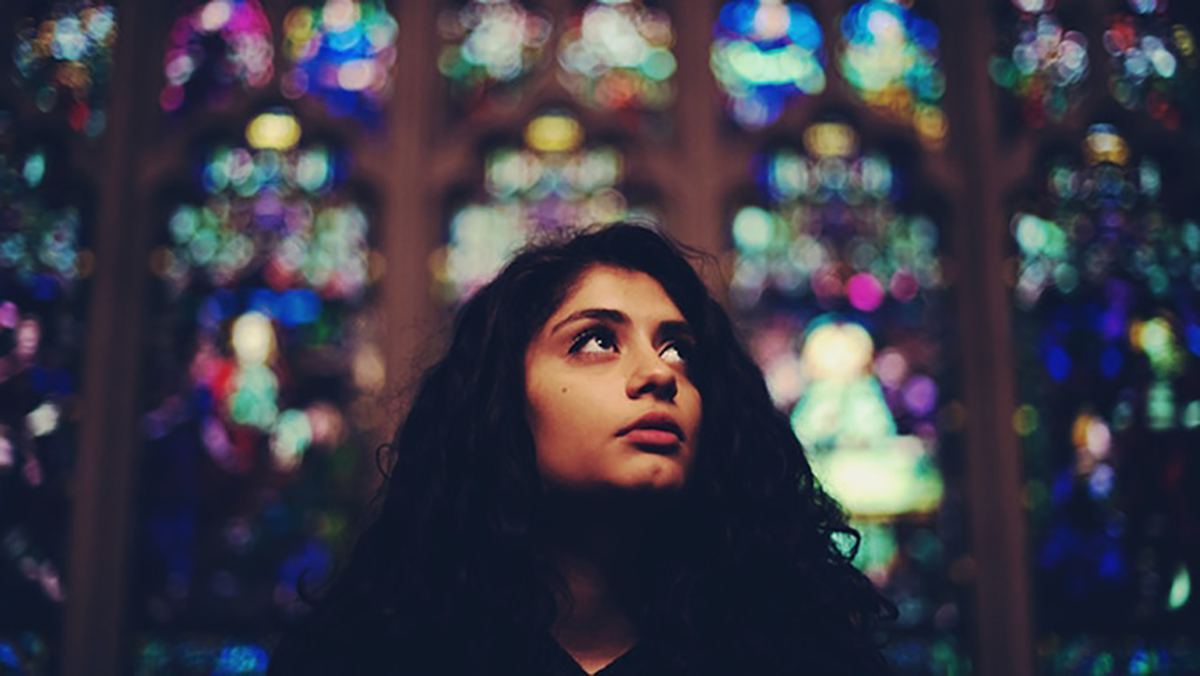New Voices: Nicole Melillo on MNSTR
The Tisch grad explains how film can change the conversation around mental health

Nicole Melillo is an emerging filmmaker Artemis Rising Foundation is proud to support. MNSTR, the recent NYU Tisch grad’s most ambitious short film to date, tackled the subject of anxiety, a psychic state that millennials like Melillo are reframing the conversation around, replacing mental-health taboos with a refreshing conversation stimulated by artful depictions. In addition to directing her own short films, Melillo has worked on productions for companies such as Sikelia, HBO, Netflix and Vogue. And right now, she’s looking to expand into directing music videos. We chatted to the curly-haired New York-based director about panic attacks, scratching celluloid, and film’s potential for driving social change.
What inspired you to explore anxiety as the subject of your film?
Anxiety affects everybody whether it’s having the jitters before a big meeting or having a full-blown panic attack. To make this topic palatable in an artistic way was really important to me. It’s something I relate to, but people all around the world experience some form of anxiety. It’s a common thread that has only recently been brought to the forefront of the cultural conversation. A couple of years ago even more so, but still today, you often can’t take time off from work because of your anxiety. There’s no tolerance for having a panic attack while on the job. Mental illness isn’t recognized as an illness as much as physical illness even though it’s so common and you’ll hear people all the time saying, “oh I’m so anxious.”
And when we do see mental illness represented in film and narrative, often we’re supposed to pity the individual suffering, whereas in MNSTR, I wanted to show a young woman overcoming the situation. There’s a lot of representations like the one we see in Cake starring Jennifer Aniston. It’s a great portrait of someone suffering depression and chronic pain. And within the storyline, it makes sense, but it’s another story of a woman who can’t get out of bed, who’s locking herself in her room in a dark space, she’s weak, her illness is getting the best of her. It’s a beautiful performance — I left the theater wrecked — but it only showed the lows of mental illness. It didn’t show the other side. The recognition that life is still going to go on, that things are ok, that things are not as scary as they may seem — that’s what I think we need more of.
When you were trying to create this vision of mental illness that’s more underrepresented, what were some of the key creative decisions?
I think the most important choice was the negative scratching. We physically scratched into the emulsion of the film to remove parts of the image to create these monsters. We shot on digital but then we printed on 35mm, made these manipulations to the film negative, and then scanned the footage back to digital. I wanted to show that people with anxiety aren’t crazy. Anxiety just makes life seem scarier than it really is. It takes out parts of what’s really in a situation and makes it seem monstrous. For a lot of people — me included — dark crowded rooms can be an anxiety trigger. So in MNSTR we have a young woman going into a dark club. As the character’s feeling more enclosed in this space, these monsters start appearing. But in the end, it’s revealed that the monsters are not really there. They’re just people.
You’ve stated before you believe film is a strong medium for positive change and connection. Thinking about the impact you’re striving to make through your exploration of mental health issues, what about film do you feel makes it a strong medium for this kind of social change?
Film is a very emotional medium. You can manipulate the kind of experience you want the viewer to have. The combination of production design, performance, script, sound, it can really push and pull someone through the experience you create. And film is a time-based medium. You are leading the viewer through this journey for a set amount of time. MNSTR is 13 minutes because it mirrors the beats of a panic attack. As the story builds, it’s timed with someone having a panic attack. Not every film has to be heavy handed to elicit social change. With MNSTR we made a storyline that was still entertaining and ambiguous. It wasn’t shouting at the viewer “I suffer from anxiety,” it was just eliciting that emotion within you. If you felt nervous or you felt on edge or unsettled in your seat that means the film did its job. Film doesn’t have to preachy. It can lead by example.
What did it mean to you as a young filmmaker to receive support from Artemis Rising Foundation and how do you feel your ambitions as an artist align with the foundation’s overarching mission?
I’m so honored to be a part of this group of amazing female artists who have been supported by Artemis Rising Foundation. I love that it’s women supporting women and that the foundation is supporting people’s creative ideas without bias. For me to be able to speak to Regina about the film and not only get business feedback but to also get creative feedback, to be able to pull upon her experiences and the network people that she’s worked with, it was super awesome.
